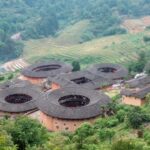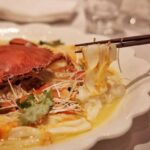
On Gulangyu Island, every turn unveils a picturesque view. Popular attractions always have their captivating qualities, and today, we’ll introduce the must-visit spots along this classic Gulangyu Island route!
Route Planning
Sanqiutian Pier — The Most Beautiful Corner — Bagua Building — Catholic Church — Haoyue Garden — Shuzhuang Garden — Sunlight Rock
The Most Beautiful Corner
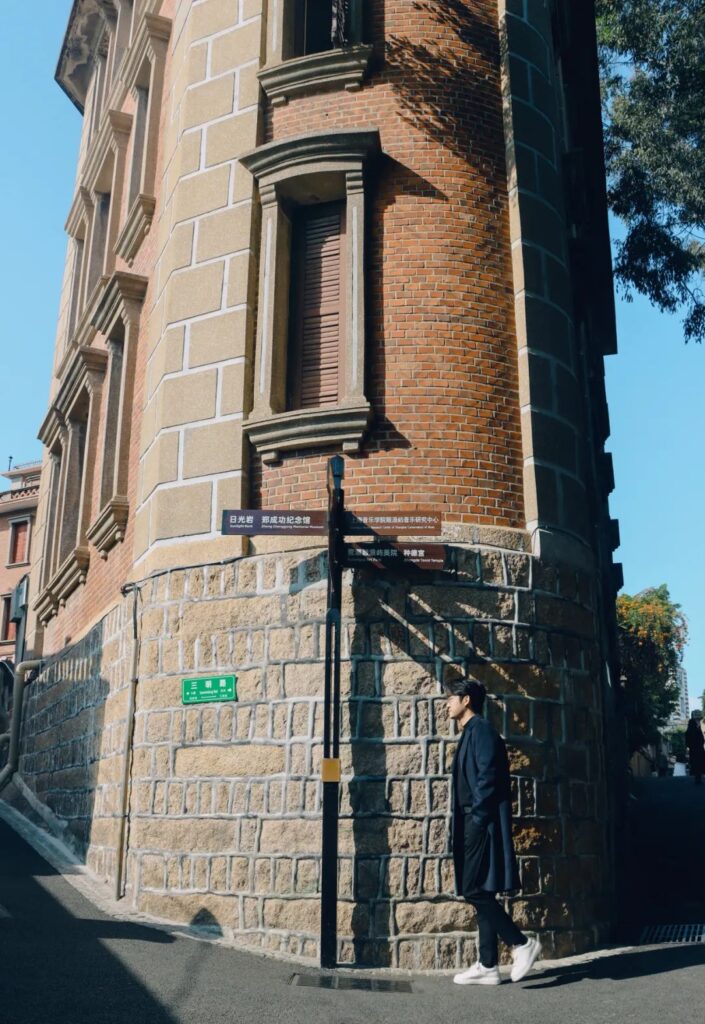
After disembarking at Sanqiutian Pier, walk about 100 meters to the intersection of Guxin Road and Sanming Road, where you’ll encounter the Most Beautiful Corner.
At the junction of two streets, the back of the building, known as the Boat House (currently a photography hotel and one of the top ten buildings on Gulangyu Island), resembles a sailboat. This red-brick building has become a popular scene for film and television and a must-visit spot on Gulangyu Island in recent years.
Many people are unaware that this was once the site of the Hongning Hospital, witnessing the pursuit of modernization in the medical field and the contribution to charitable causes by overseas Chinese returning to Gulangyu Island.
Nearby recommended spots: Pipe Organ Art Center, Sanhe Palace Cliff Inscription, former HSBC Bank site
No admission ticket required
Bagua Building

Walking along Guxin Road, it’s hard not to notice a unique building – the Bagua Building.
If the buildings on Gulangyu Island were compared to songs, the Bagua Building would be the high mountains and flowing water.

Accompanied by flying birds and lush greenery, the Bagua Building has become the “only in China, world-class” Gulangyu Pipe Organ Museum. (Due to the need for exhibition hall renovation and upgrading, the exhibits will be relocated to the temporary exhibition hall of the Gulangyu Pipe Organ Museum at No. 69 Fuxing Road, Gulangyu Island).
The appreciation of the Bagua Building begins with its appearance, but what captivates people is its story.
As a landmark building on Gulangyu Island, Xiamen, the Bagua Building was painstakingly built by Lin Heshou of the Lin family, a wealthy Taiwanese family from Banqiao, over more than ten years. With a history of over 110 years and several changes, there are many rumors surrounding it, witnessing the kinship between both sides of the Taiwan Strait and the changes of the times.
Nearby recommended spots:Yangjia Garden (perfect vantage point for the Bagua Building), along the way, you’ll pass by Guxin Road, which has several photo-worthy flower wall spots that are super instagrammable~
No admission ticket required
Catholic Church
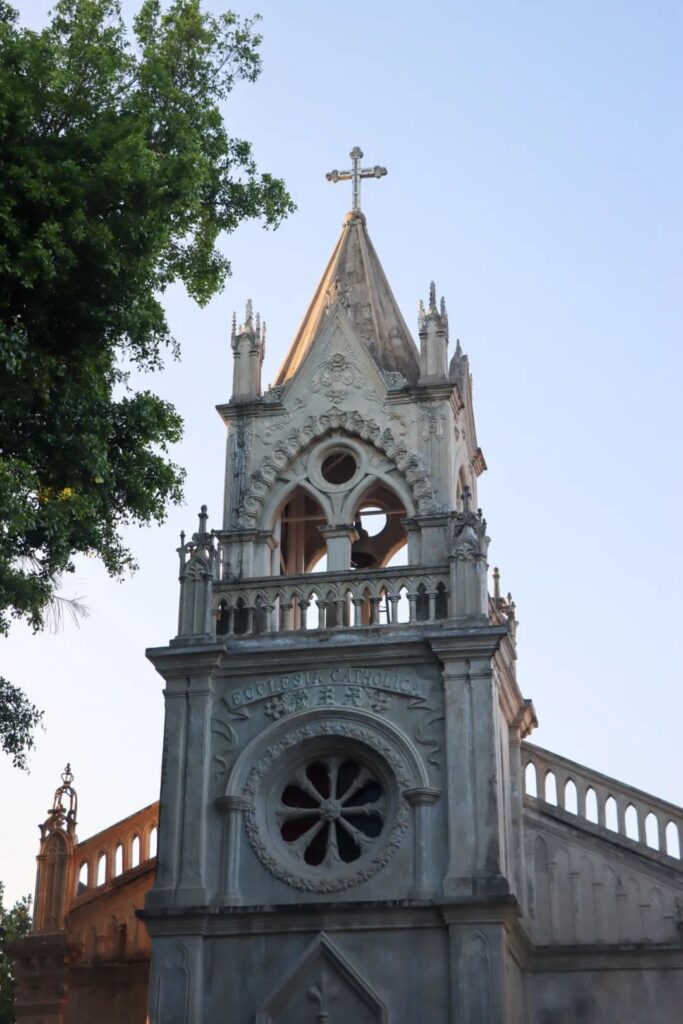
After strolling and snacking along Longtou Road, you’ll arrive at the Concord Church, with the magnificent Catholic Church right next to it.
Designed by a Spanish architect, the church building features four pointed arches forming the hall space. On the south side of the entrance, there is a Gothic-style bell tower adorned with ornate pointed arch windows and rose windows.
The entire building is white, showcasing the characteristics of Gothic architecture, forming a striking contrast with the Western classical revival style of the Protestant Concord Church across the street.
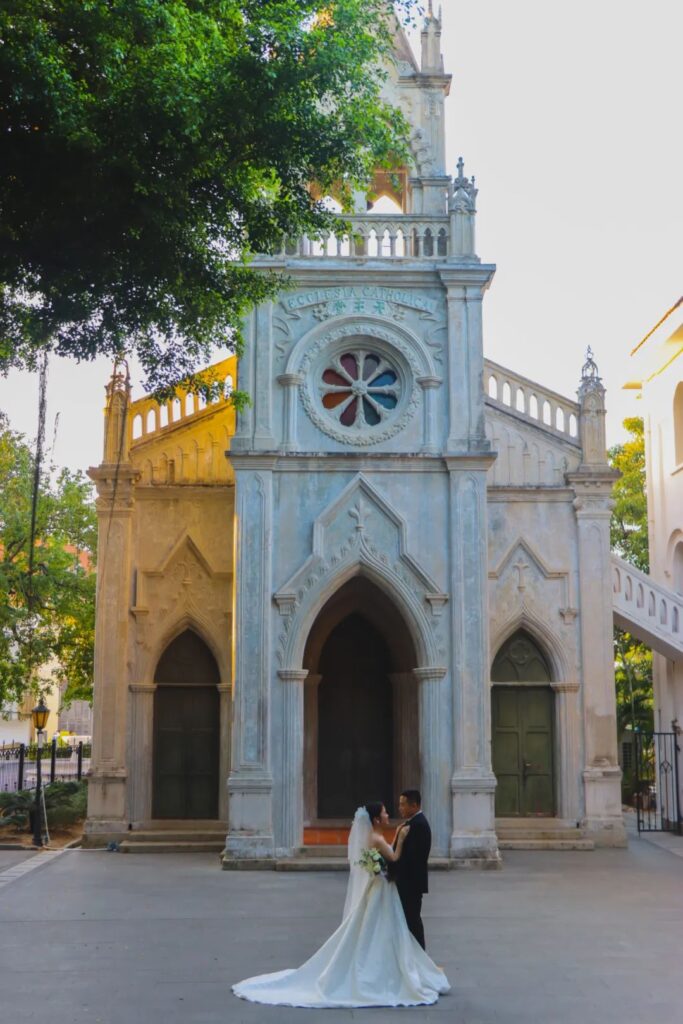
The Catholic Church resembles a dreamy Gothic castle, perfect for capturing photos in a wedding dress or a little white dress.
Nearby recommended spots: Concord Church, Longtou Road Food Street, Shen Family Minnan Rice Noodles, Lin’s Mochi, Egg-filled Snacks
No admission ticket required
Haoyue Garden
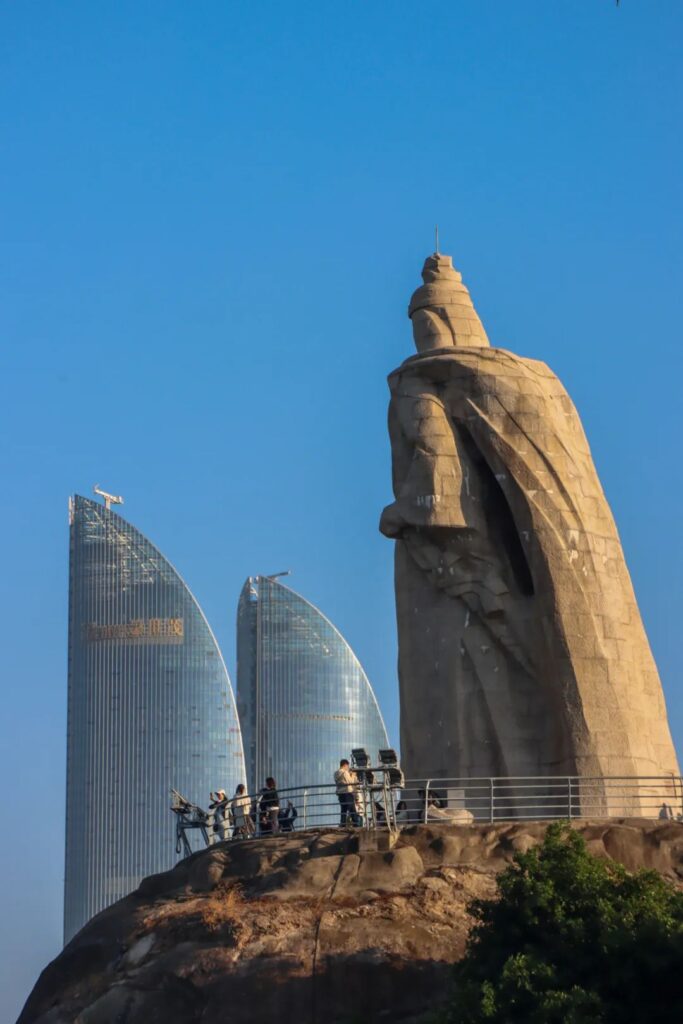
Many friends may not have heard of Haoyue Garden, but when you see the statue of Zheng Chenggong, you have actually seen Haoyue Garden, located on the southeast coast of Fudi Yan on Gulangyu Island.
Haoyue Garden was built to commemorate Zheng Chenggong’s historical achievements in expelling the Dutch and recovering Taiwan. The statue of Zheng Chenggong on the rock is the main structure of the garden and the guardian deity in the hearts of Xiamen people.
The garden features elegant Ming Dynasty architecture and seagulls on the beach, with the sea and mountains complementing each other, full of the unique charm of a seaside garden.
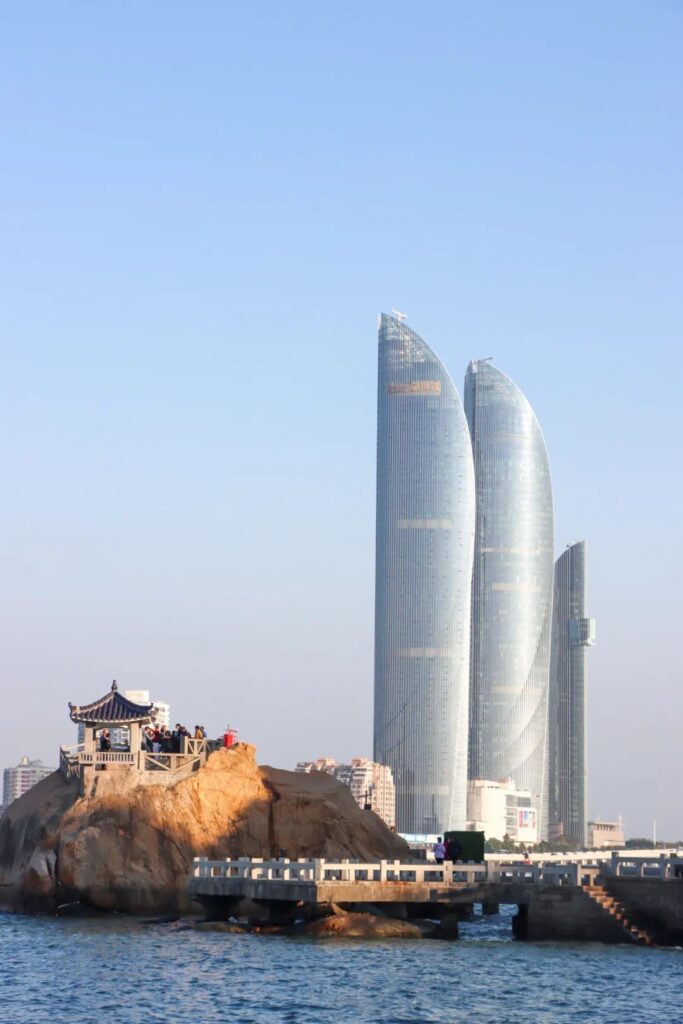
From any angle in the garden, you can take a picture of the statue of Zheng Chenggong, with the Ming Dynasty architecture as the background, making the photos especially elegant.
Opening hours: Winter: 8:00-17:30; Summer: 8:00-18:00
Nearby recommended spots: Dade Ji Bathhouse, Dade Ji ½ Coffee
Shuzhuang Garden

Walking from the east side of Gulangyu Island along the trail to Ganghou Road, you will reach another stunning garden – Shuzhuang Garden. Built in 1913 as the private garden of Lin Erjia, a wealthy Taiwanese, it faces the sea and covers an area of over 20,000 square meters, divided into Canghui Garden and Bushan Garden.
The “Piano Museum,” considered the world’s best, is located in Shuzhuang Garden, displaying more than 40 antique pianos collected by the patriotic overseas Chinese Hu Youyi.
Shuzhuang Garden features ten scenic spots, including Meishou Hall, Renqiu Pavilion, Zhenshu Pavilion, Forty-Four Bridge, Tinglang Pavilion, Wanshi Mountain House, Twelve Caves, Yiai Wulu, Guanchao Building, and Xiaolan Pavilion, forming a unified group of traditional Chinese garden architecture, giving the entire garden both the elegance of Jiangnan gardens and the brilliance of Minnan gardens.

What surprised us this time was the hidden mysterious caves in Shuzhuang Garden, twelve in total, which are the “Twelve Caves” attraction. On one hand, these caves are arranged in the order of the earthly branches, and on the other hand, each cave represents a different zodiac animal.
Immersing oneself in the maze-like caves and searching for the twelve zodiac animal sculptures is quite interesting. While relaxing, it adds a touch of fun in exploring traditional Chinese culture.
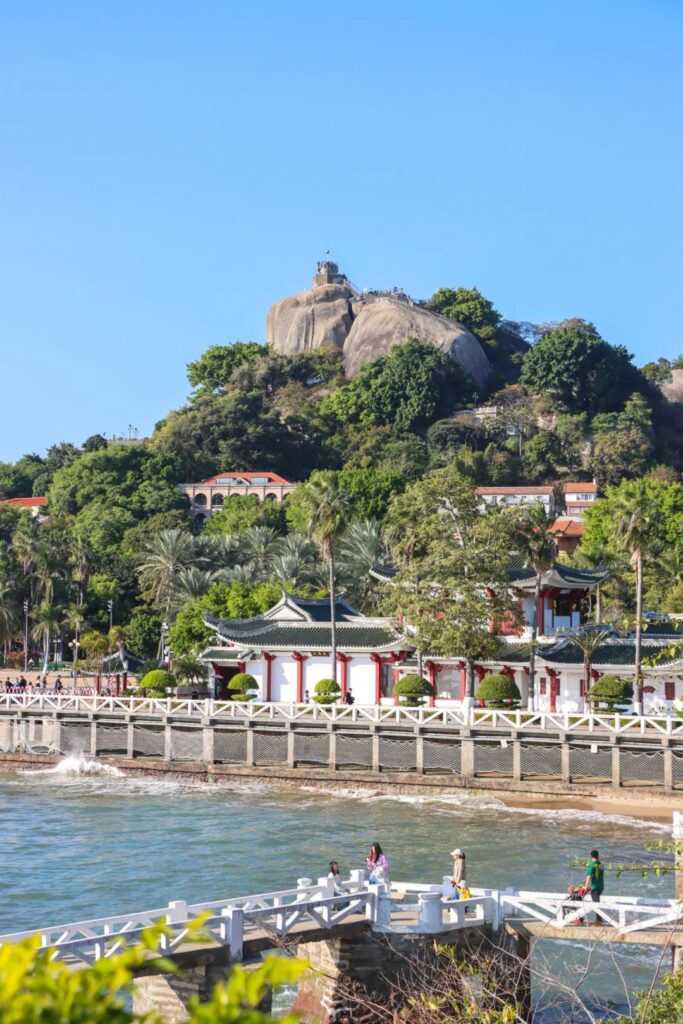
Another highlight is the Forty-Four Bridge, with each pavilion on the bridge having its own unique features. In the middle, two giant rocks are stacked together, with the four characters “Haikuo Tiankong” (Vast Sea and Sky) engraved on them, standing tall and erect. Every scenic spot in the garden is rich in cultural and historical connotations.
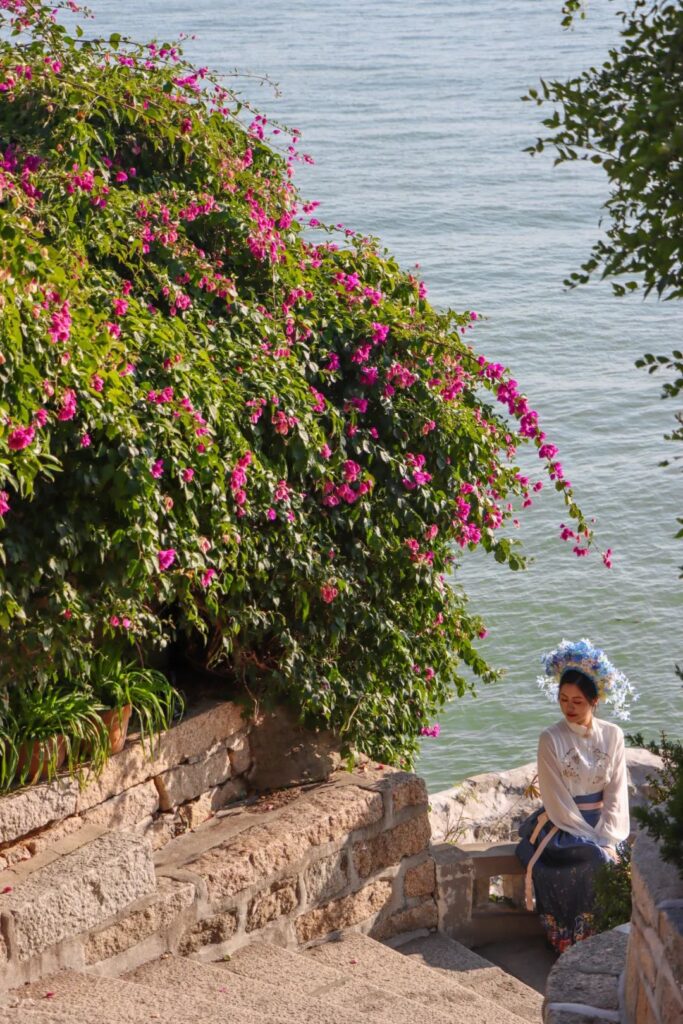
There is a hidden photo spot here. Follow the pavilion and walk 100 meters to the stone corner, where a downward-facing flower wall angle is hidden~ Whoever takes a photo here looks beautiful.
Opening hours: Winter: 8:00-17:30; Summer: 8:00-18:00
Nearby recommended spots: Engraving Museum
Sunlight Rock

“If you don’t climb Sunlight Rock, you haven’t really been to Xiamen.” Although it may be an exaggeration, when you climb to this vantage point on Gulangyu Island and overlook Xiamen Island, you will find that Sunlight Rock lives up to its name, giving people a sense of brightness and vastness.

The scenery at the top of the rock is pleasant, and the temple at the foot of the rock nourishes the soul.
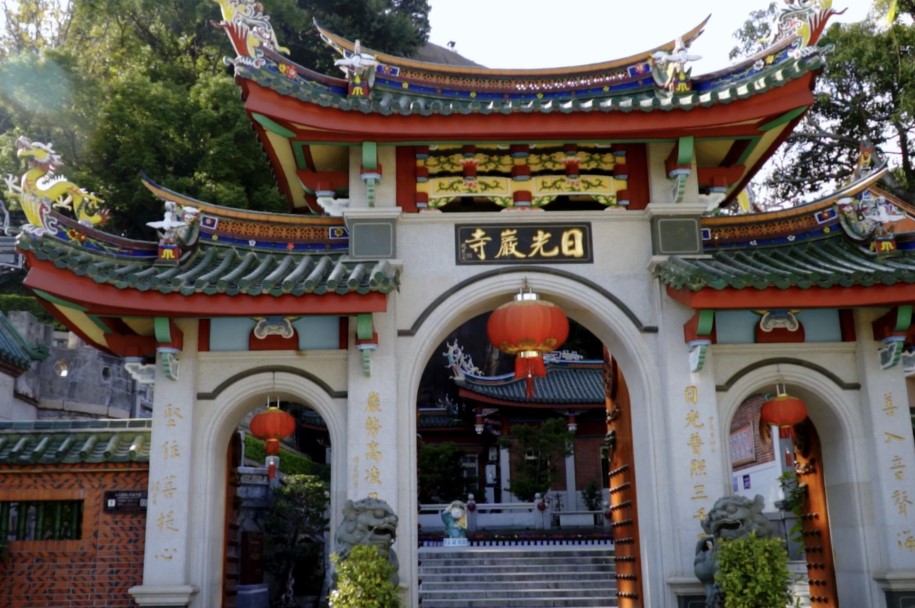
The temple architecture follows the contours of the mountain, and the incense is strong. Locals often come here to pray for blessings and good fortune.
Master Hongyi once secluded himself in the temple for meditation and recuperation. You can not only follow in the footsteps of Master Hongyi’s life but also appreciate the cultural connotations of the cliff inscriptions, pray for blessings, and enjoy the scenery of Xiamen and Gulangyu, as well as the view of the sea and sky.
Opening hours: Winter: 8:00-17:30; Summer: 8:00-18:00
Tips: There is no shelter at the summit. On sunny days, it is recommended to take sun protection measures. As the steps are quite steep, the elderly, children, and ladies wearing high heels should pay extra attention to safety.
This classic Gulangyu Island route features enchanting and gentle bays, ingeniously crafted caves and rocks, elegant seaside gardens, diverse architectural styles, and poetic cultural attractions. Don’t miss it due to the “internet celebrity” bias.
